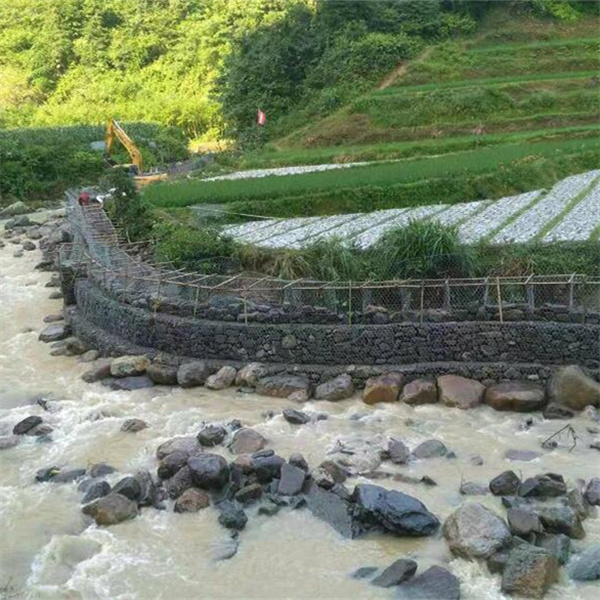Dùbh . 25, 2024 16:25 Back to list
maximum height limitations for gabion retaining walls in construction projects
Understanding Gabion Retaining Walls Maximum Height Considerations
Gabion retaining walls have gained immense popularity in landscaping and civil engineering due to their unique design and functionality. These structures, made of wire mesh baskets filled with rock, stone, or other materials, serve various purposes, from soil erosion control to aesthetic enhancements in gardens and roadsides. However, one question commonly arises among architects, engineers, and DIY enthusiasts what is the maximum height for gabion retaining walls?
The Basics of Gabion Retaining Walls
Before diving into height considerations, it’s essential to understand how gabion retaining walls function. The name gabion comes from the Italian word gabbione, meaning big cage. These walls rely on gravity and mass to retain soil and resist lateral pressures from the earth behind them. The permeability of the stones allows for effective drainage, which reduces hydrostatic pressure behind the wall—a critical factor in maintaining structural integrity.
Maximum Height Factors
The maximum height of a gabion retaining wall depends on several critical factors, including soil type, wall design, drainage, and local regulations. Generally, gabion walls can reach heights of up to 6 to 8 feet (approximately 1.8 to 2.4 meters) without requiring additional reinforcements. However, it’s essential to note that various elements can influence this height limit.
1. Soil Characteristics The type of soil behind the wall plays a significant role in determining its maximum height. Cohesive soils, like clay, can generate more lateral pressure than non-cohesive soils, like sand. Engineers often conduct soil tests to analyze the soil’s bearing capacity and determine a safe height for the retaining wall.
2. Wall Design and Reinforcements The design of the gabion wall itself will significantly affect its height. This includes the design of the wire mesh, the type of infill material used, and any potential reinforcements like geogrids or additional layers of stones. Proper engineering can increase the wall’s height, allowing for structures that stand several feet higher than the typical maximum.
3. Drainage Solutions Effective drainage is crucial for maintaining the wall's integrity. If water accumulates behind the wall, it can significantly increase hydrostatic pressure, potentially leading to failure. Proper drainage solutions, such as weep holes or perforated drain pipes, can mitigate these risks and permit taller wall designs.
gabion retaining wall maximum height factory

4. Local Codes and Regulations It is paramount to comply with local building codes and regulations, which may specify maximum heights for retaining walls based on local geological and hydrological conditions. Proper permits should always be secured before construction, ensuring that the design is safe and up to standard.
Best Practices for Construction
If you plan to construct a gabion retaining wall, consider the following best practices to maximize safety and functionality
- Consult with a Civil Engineer Especially for taller walls, obtaining professional advice is invaluable. Engineers can provide insights into material selection, wall design, and height limitations based on the specific conditions at your site.
- Use High-Quality Materials Investing in high-quality wire mesh and infill materials will enhance the durability and longevity of your wall. Corrosion-resistant mesh is essential to prevent deterioration over time, especially in moist environments.
- Ensure Proper Drainage Implementing a comprehensive drainage strategy is crucial for long-term stability. In addition to weep holes and drainage pipes, ensure that the area around the wall allows for proper water flow and runoff management.
- Regular Maintenance Checks After construction, regularly inspect the wall for any signs of erosion, settling, or drainage issues. Early intervention can prevent major structural problems in the future.
Conclusion
Gabion retaining walls represent a versatile and durable solution for earth retention and landscaping needs. While these structures can be built to significant heights, careful consideration of soil conditions, drainage, wall design, and local regulations is vital to ensure stability and safety. By following best practices and consulting with professionals, you can successfully implement a functional and aesthetically pleasing gabion retaining wall in your project.
-
Visualizing Gabion 3D Integration in Urban Landscapes with Rendering
NewsJul.23,2025
-
The Design and Sustainability of Gabion Wire Mesh Panels
NewsJul.23,2025
-
The Acoustic Performance of Gabion Sound Barriers in Urban Environments
NewsJul.23,2025
-
Mastering the Installation of Galvanized Gabion Structures
NewsJul.23,2025
-
Gabion Boxes: Pioneering Sustainable Infrastructure Across the Globe
NewsJul.23,2025
-
Custom PVC Coated Gabion Boxes for Aesthetic Excellence
NewsJul.23,2025
-
Installation Tips for Gabion Wire Baskets in Erosion Control Projects
NewsJul.21,2025






